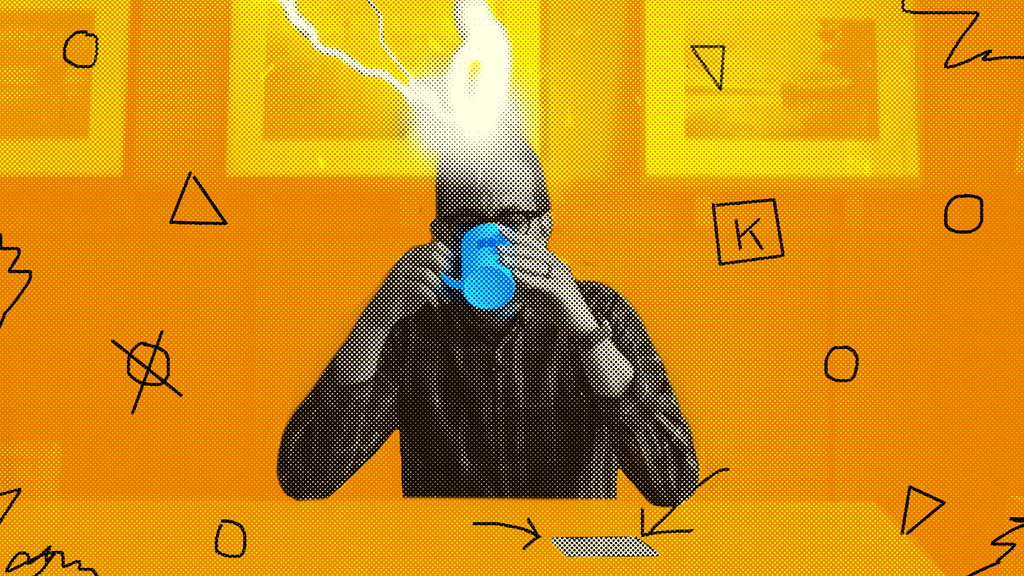Storyclock Development Log
How We Wrote the Greatest Kickstarter Video in the Whole World

One year ago today, we launched the Kickstarter campaign for the Storyclock Notebook. We ended up raising over $120,000 and shipping notebooks to over 5,000 backers.
To celebrate this momentous anniversary, we thought it'd be cool to show you how we used the Storyclock Notebook's Development Log to write what some would call the greatest Kickstarter video in the history of forever. And since people have definitely called it that, let's dive in!
Do your procrastination research
We started by watching a ton of videos. Mostly Kickstarter videos, but also everything our friends at Sandwich Video make, because they're the best at this.
We wanted to understand what made a good pitch move with speed, precision, and (most importantly to us) character. Our video should be as cool and interesting as the people who would use our product.
We discovered that all of our favorite videos were:
- Simple - usually just like their products
- Direct - here's what it is, here's what it does
- Human - guided by a real person with a real
beardvoice
Truth be told, we were a little worried about the first thing. Our product is simple, but we weren't just pitching a product -- we were pitching the methodology on which it's built. That's twice as many things to pitch. If we didn't do our jobs right, the video could end up being confusing or boring. Or both.
Figure out what you need to say
We used the Development Log to write down everything we knew the video needed to communicate. We also recorded any jokes or visuals as they came to mind, like Jingles the Screenwriting Cat and the brain x-ray (fun fact: that's actually Aharon Rabinowitz's brain). We made sure to log any of the overarching themes we were picking up on (the loudest one: "writing is hard") in the Themes section, and any characters or faces that might be making an appearance in the Characters section.

Find the journey
Then, based on the rhythms and sensibilites of the many videos we'd studied, we put all of our talking points and ideas in a loose structure on the clock.

When we saw this bird's-eye-view of our planned structure, it felt... clunky. There was no movement. No flow. No journey.
It needed a little Joseph Campbell magic.

So we went about putting it into the traditional "hero's journey" story structure we already know super well from writing movies and stuff. Introduce the world (writing), present the problem (it's hard), show the flaws of traditional solutions (waiting for inspiration, just trying harder, instagramming that you're writing) then present the big new solution (the Storyclock Notebook), and set out on the journey.
Here's the journey we landed on:
If this looks familiar to you, it's because it's more or less the standard formula for most business pitches (we think -- we're still fairly new to doing business things). Let's break it down so humanity can easily apply it to every Kickstarter video going forward:
Act 1: Problem
- Intro and Problem Presented: We start with the lightning bolt gag, showing the difference between what we expect the process of writing to be like, and what it's actually like. We don't just show how it's hard, we show why it's hard: inspiration gives you a pile of ideas, and then just... leaves. Everything after that is up to you. This is where we introduce the problem our product is attempting to solve. Additionally, and just as important, this is where we establish the tone of our campaign and our voice as its creators. Are we serious? Are we funny? We make an effort to be ourselves, and avoid trying to be anything we're not.
- Theme Stated: Writing is gross and really hard. This is the big problem, and the theme that guides the information and humor of the rest of the video.
Act 2: Solution
- The Product (And Who Made It): Now we get to reveal the product. Isn't it awesome? The viewer may not even know what it does yet, but they sure are excited to find out because this thing looks really cool. We made it. We're pretty cool, too. We show you a picture/clip of us, looking pretty cool in an approachable way.
- How It Works: Now we walk through what the thing does. This is where we put the methodology part. Picture your story like a clock. Put your ideas where you think they'd belong. Now you can see where your gaps are.
- The Secret Ingredient: This is the part that may not apply to every Kickstarter video or product, but it's important to really exploit this moment if it does. The secret ingredient for us was the idea of using symmetry on the clock to fill story gaps. This is the special sauce of the whole methodology. And it happens right at the midpoint of the video.
- Features (Design and Specs): Here's where we specify what all "comes in the box." Research logs, Development logs, nerdy storytelling resources on the inside cover, etc.
- Various Applications: In an infomercial, this is where you see clips of people using the Shamwow to not just clean up normal spills but also to do stuff like mow their lawn or get rid of a dead body. We used this part to talk about how the Storyclock Notebook is useful for any and every storytelling medium (we even mention Kickstarter videos, because obviously).
Act 3: Invitation
- Why Kickstarter?: Act 3 is the exciting part. This is where we get to invite the viewer to be a part of this awesome thing we're doing. You've pitched the product, now it's time to pitch the campaign. But first we owe them a quick explanation for why we're not just doing this with our own money. Spoiler alert: it has nothing to do with money. People don't just back a campaign because they want your product, they want to be a part of the journey. They want the experience of your campaign. They want to be a part of making something cool. So don't just explain how their money will help, explain how THEY will help. Their feedback, their evangelism, their engagement. Tell them that's what you want the most, because it is actually what you want the most.
- Reward Tiers: Here's where we run through all the cool stuff people will get when they back the campaign.
- Outro and Call to Action (w/ Callback to Theme) Finally, we wrap it up with a call to action that's more than just, "give us your money." Just as important is urging them to share the project with someone. I like to wrap every story with some kind of symmetrical callback to something from the beginning, and so it worked out great that we made an Instagram joke in the first act! We call back to it here by encouraging the viewer to post a picture of their coffee next to their computer open to our campaign and include our hashtag. Boom. Symmetry.
Some great crowdfunding resources
We worked on the Storyclock Notebook and its Kickstarter campaign for over two years before launching it. During that time, we prototyped and tested every conceivable version of the notebook, studied tons and tons of Kickstarter campaigns, and read roughly one bajillion blogs and articles on the subject of crowdfunding. Here are a noteable few that directly influenced the way we did things:
- Jamey Stegmaier's Kickstarter Lessons blog is literally the best crowdfunding resource out there.
- This "Making Leaky Timbers" blog post by Joey Ellis has a great breakdown of Joey's costs, as well as things he wishes he'd done differently. Super helpful to learn from all of his mistakes. Apparently Joey gave up on his hopes and dreams at some point recently because this post is only accessible through the Wayback Machine.
- Kickstarter's Creator Handbook is actually super useful.
- This interview with Max Temkin is probably great. Truth be told, I don't remember if I've listened to it or not, I just know that almost everything Max has ever said about Kickstarter is solid gold.




